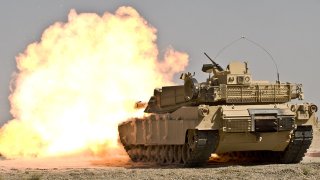Ukraine’s Kursk Gamble: Audacity Born Out of Desperation
Desperate situations can lead to desperate actions, and Ukraine's August 6th incursion into Russia's Kursk Oblast was an audacious, yet desperate, move that took Russia and the world by surprise.
Desperate situations can lead to desperate actions, and Ukraine's August 6th incursion into Russia's Kursk Oblast was an audacious, yet desperate, move that took Russia and the world by surprise. Moving into a sparsely populated region with no strategic significance, Ukraine had assembled a well-trained and well-equipped fighting force of perhaps 15,000 that initially met little resistance from Russian border guards. It would be days before serious Russian resistance emerged, but Russian troops were quickly dispatched, and within a week the Ukrainian initiative had stalled. Kyiv struggled to justify its surprising move as it had little, beyond roughly 400 square miles of seized territory, to show for its efforts.
Had Ukrainian forces succeeded in seizing the Kursk nuclear power plant, as many observers speculated must have been one intended goal, the risks of the incursion might have appeared to be justified. However Ukrainian forces did not closely approach the plant, and as of current news, Ukrainian forces were bogged down in fierce fighting. While the fog of war makes it difficult to assess how matters are proceeding, evidence mounts that Ukraine is sustaining significant losses in equipment, ammunition, and – most importantly – personnel.
Russian forces dedicated to the fighting in Kursk have grown considerably, and there is no evidence these forces have been pulled away from the eastern battlefronts. In contrast, Ukraine augmented some of its best reserves dedicated to the Kursk operation with troops drawn from the east.
Overall, intense fighting incurs serious casualties on both sides of the Kursk battle, while in Donbas, Russian forces accelerate their grinding advance. Important fortified cities such as Pokrosk and Toretsk teeter on the edge of falling to Russian forces. Russia is moving toward decisive success in the Donbas if Ukrainian troops cannot maintain their resistance.
Ukraine took a high-risk gamble, putting many dear resources into the Kursk operation, and success might have altered the reality of drawn-out fighting in the east that was slowly yielding Russian territorial gains. To date, no new weapons and infusions of foreign assistance, no changes in military leadership, and no changes in tactics have fundamentally changed the logic of the intense fighting in the east, where Ukraine simply does not have the forces to match the growing Russian military juggernaut.
As matters stand today, the audacious Kursk initiative does not look to have been a good idea, given it appears the initiative will eventually fail. Indeed, many believe the Kursk offensive only undercuts the Ukrainian cause, as especially dear personnel and equipment are expended on yet another front, while the besieged Ukrainian position on eastern fronts is already stressed to near limits. Ukraine was looking at a long-term retreat as its worsening position on the battlefield was joined with the country’s worsening economic situation, not to mention the flagging support of Western friends.
Many observers note that Russia has a nearly ten-to-one advantage in artillery, and even Ukraine’s commander of drone forces has admitted Russia enjoys a six-to-one advantage in drones. As much of the fighting, and most of the casualties, are due to distance fighting, these numerical advantages are determinative.

Ukraine cannot mount an effective push against Russia. At some point soon, Russian forces will take Donbas and will be at the Dniepr. The collection of NATO countries will have to decide what, if any additional, steps they are willing to take in Ukraine’s defense. Only the direct entry of NATO troops into the war could halt an eventual Ukraine defeat. Will NATO take such a step, and where might it lead? Important choices lie ahead.
About the Author:
John P. (Pat) Willerton is a Professor of Political Science in the School of Government and Public Policy at the University of Arizona, Tucson, where he is also an affiliate of the Department of Russian and Slavic Studies.
Image Credit: Creative Commons.


